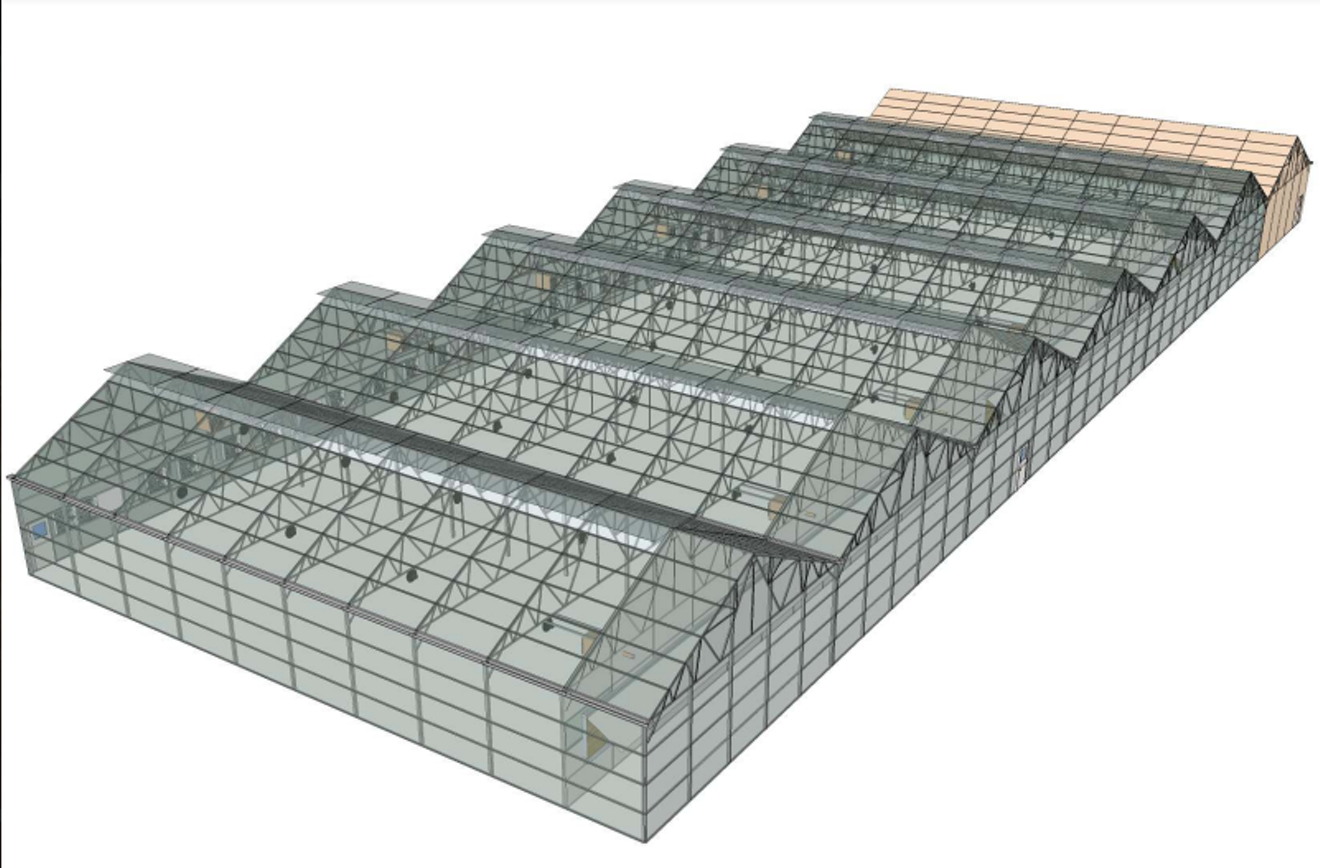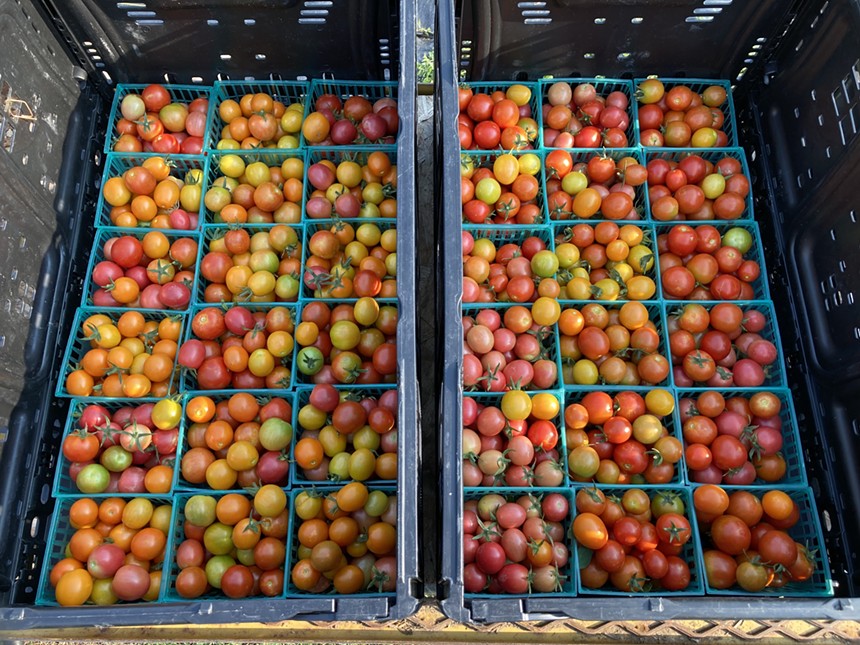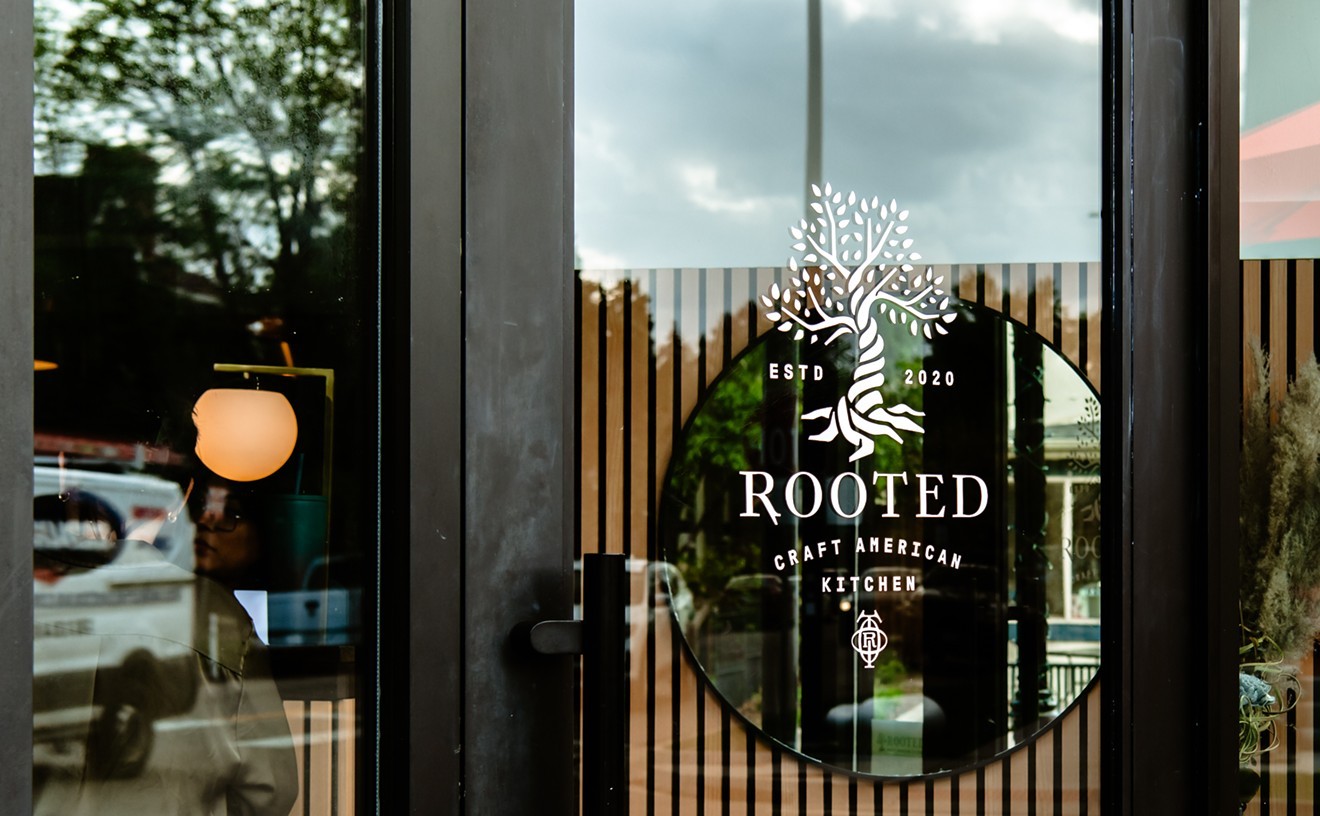The week after Denver Public Schools broke ground on its new five-acre greenhouse, Denver had its first frost. It was mid-October — the typical end to the region’s short, 145-day average growing season. And Hayden Robbins, the new greenhouse supervisor, spent the week helping to bring in the harvest from two of the school district’s outdoor gardens as quickly as possible.
Soon, though, Robbins won’t be constricted by the changing seasons. The greenhouse, which is scheduled to be built by April 2022, creates a controlled environment for year-round growing. Robbins is particularly excited about the climate control the greenhouse allows and the potential to experiment with different plant varieties. Without outdoor elements, he'll be able to “focus on quality and quantity without having any other disruptions,” he says.
The new greenhouse, at 4900 South Field Way, will have seven bays, each measuring 100 feet by 40 feet. One bay will include a harvest room, a break room and a large cooler. Another bay will host seedlings and smaller plants. The largest space — the remaining five bays — will be dedicated to fruiting plants. Robbins hopes “the total fruiting area will have 3,500 plants going at once,” he says.
Plans for the greenhouse began nine years ago, says Theresa Hafner, DPS executive director of food services. It’s part of a greater drive to infuse school meals with fresh products. In addition to school gardens and farms, the district already sources ingredients such as peaches, onions, cantaloupes, cucumbers and potatoes from Colorado purveyors; in the 2019-2020 school year, it received nearly 309,000 pounds of local produce, Hafner adds.
DPS hopes the greenhouse will be able to grow up to 200,000 pounds of additional produce each year. To start, it will grow tomatoes only, but leafy greens and salad fixings will eventually be added to the mix and used for the district’s daily 45,000 school lunches. Extra produce may be sold for profit.
“When we first start, we’ll be testing a lot of the different [tomato] varieties,” Robbins explains. “We’re looking for the best — the most resistant to pests and disease.”
Robbins went to Colorado State University for health promotion, but working with plants is “something that really started as a light hobby and turned into something that became a serious hobby and then a job and then a career,” he says. He’s spent the past eight years working in horticulture for companies such as Nourish the Planet and managing large-scale marijuana facilities throughout Colorado.
In May 2020, while looking for horticultural jobs across the country, he saw the job posting for greenhouse supervisor with DPS. “I was really excited to be able to provide fresh produce for the cafeterias,” he says. It was a way to combine his passion for gardening and doing something valuable for the community. “I did the school lunches growing up, and I definitely think that it helped me realize the importance of healthy and fresh food.”
Robbins was hired through a U.S. Department of Agriculture grant. The grant is one of several funding sources that make up the greenhouse’s $4 million price tag. In addition to the USDA grant, DPS received a $1 million grant from Healthy Food for Denver Kids and $2.1 million in bond money from Denver voters.
Most of the money will be used to construct the greenhouse itself. The five-acre structure will have various automation features to control humidity, ventilation, irrigation and even supplemental nutrients. They’re looking into what supplemental lighting might be needed, Robbins adds.
Currently, Robbins is focused on accumulating inventory for when the greenhouse is completed in the spring. He’s searching for suppliers who can provide vast quantities of soil and pots despite global supply-chain issues. He anticipates ordering approximately 3,000 five-gallon buckets and at least 165,000 pounds of coco coir, a coconut-husk soil alternative. Come late-spring, each of those five-gallon buckets will be planted with two tomato plants each. They will grow up to heights of ten feet, creating a “labyrinth of plants,” Robbins says.
He looks forward to the day when he will show that towering world of plants to school kids. The district plans to eventually include an educational component in the greenhouse such as an urban-agricultural pathway, explains Hafner. DPS already uses its outdoor gardens to teach kids about planting seeds and growing their own food.
Robbins thinks the greenhouse will “help the kids get inspired,” he says, especially when they get to see varieties like black cherry tomatoes and Golden Boy that are different from the standard store-bought fruit. Such nuances might even help students “find a passion in horticulture,” he adds, since that’s what started him on the plant-growing path so many years ago.
[
{
"name": "Air - MediumRectangle - Inline Content - Mobile Display Size",
"component": "12017618",
"insertPoint": "2",
"requiredCountToDisplay": "2"
},{
"name": "Editor Picks",
"component": "17242653",
"insertPoint": "4",
"requiredCountToDisplay": "1"
},{
"name": "Inline Links",
"component": "18838239",
"insertPoint": "8th",
"startingPoint": 8,
"requiredCountToDisplay": "7",
"maxInsertions": 25
},{
"name": "Air - MediumRectangle - Combo - Inline Content",
"component": "17261320",
"insertPoint": "8th",
"startingPoint": 8,
"requiredCountToDisplay": "7",
"maxInsertions": 25
},{
"name": "Inline Links",
"component": "18838239",
"insertPoint": "8th",
"startingPoint": 12,
"requiredCountToDisplay": "11",
"maxInsertions": 25
},{
"name": "Air - Leaderboard Tower - Combo - Inline Content",
"component": "17261321",
"insertPoint": "8th",
"startingPoint": 12,
"requiredCountToDisplay": "11",
"maxInsertions": 25
}
]












